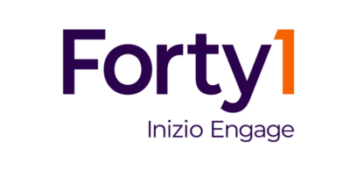Why we all need ‘real’ communication in the workplace
Listening to Charli XCX’s ‘Brat’ for the first time, I found myself unexpectedly drawn in. Here I was, someone decidedly outside the target demographic, connecting deeply with an album that Charli herself describes as being about “That girl who is a little messy and likes to party and maybe says some dumb things sometimes. Who feels herself but maybe also has a breakdown. But kind of like, parties through it, is very honest, very blunt. A little bit volatile.” I couldn’t help but wonder—what was it about this that resonated with me so strongly? And more importantly, what might this tell us about the future of employee engagement?
The answer, I realized, lies in authenticity. It’s the thread that runs through Brat’s success—an album that deliberately rebels against perfectly curated content in favor of raw honesty. This shift toward authenticity isn’t just a passing trend in pop culture, it’s become a fundamental expectation in how we connect, communicate, and engage with each other, including in the workplace. When Charli XCX says “Me, my flaws, my f— ups, my ego all rolled into one,” she’s tapping into a broader cultural hunger for genuine expression that’s reshaping everything from social media to corporate communication. But how did we get to this point?
In the blink of an eye, our cultural landscape has undergone a seismic shift. The glossy veneer of traditional celebrity worship has cracked, revealing a new era dominated by authenticity-driven influencers who prioritize relatability over perfection. This transformation extends far beyond music and entertainment—it’s a fundamental reimagining of how influence and connection work in our digital age.
As we forever doomscroll (with research showing our average screen attention span has plummeted from 2.5 minutes in 2004 to just 47 seconds today), we’re no longer captivated by the unattainable lifestyles of Hollywood’s elite, but rather drawn to the raw, unfiltered glimpses into the lives of digital creators who feel like friends. This cultural pendulum swing, propelled by the rise of new social media apps like TikTok and the demands of a lockdown generation craving genuine connection, has blurred the lines between ‘celebrity’ and ‘follower’. The expert influencer has emerged, armed not with red-carpet glamour, but with valuable insights, messy realism, and relatable vulnerability.
In this brave new world, authenticity is the new currency, and the power to influence has been democratized. The implications reach far beyond social media and entertainment—this fundamental shift in how we value and connect with voices of influence is now fundamentally altering workplace expectations.
Just as audiences now demand genuine, unfiltered content from influencers, employees expect authentic communication from their organizations. They’re no longer satisfied with corporate broadcasts from on high; they want real connection, true transparency, and genuine engagement.
So how can organizations transform their traditional communication approaches into something more authentic? It’s time to challenge the standard corporate playbook. Here’s how you could adopt a little more ‘Brat’ into your own communications:
| Rather than… | Why not try? |
| A presenter ‘show and tell’ style town hall and moderated Q&A. | The Reverse Town Hall: Unscripted ask-me-anything sessions where leaders respond to questions on the spot, embrace awkward pauses, and admit when they don’t have all the answers. |
| Polished, edited CEO content, filmed in a professional studio. | User-Generated “Raw Reality” CEO Updates: Leaders filming quick updates from wherever they actually are – their messy desk, between meetings, or even their morning commute. Complete with background noise and real-life interruptions. |
| Monthly department updates focused on successes. | The “Work in Progress” Showcase: Teams sharing projects mid-development, including pivot moments and lessons from failures. It’s about celebrating the journey, not just the destination. |
| Formal cross-team knowledge-sharing sessions. | The Team Thread Takeover: Different teams hijacking the company Slack or Teams channel for a day, sharing their work their way – from developers’ debug disasters to employees sharing their bloopers. |
| Quarterly business review updates focused on the latest deliverables. | The Fail Forward Forum: A monthly space where teams share what went wrong, what they learned, and how they’re figuring it out – because real progress isn’t a straight line. |
However, the authenticity revolution isn’t without its complexities. Just as influencers grapple with the paradox of ‘performing authenticity’—that constant pressure to strategically curate their non-curated moments, plan their spontaneity, and carefully craft their ‘casual’ content—organizations must navigate similar contradictions.
The Performance of Authenticity
The very act of trying to appear authentic can become its own form of performance. Take Instagram’s Head Adam Mosseri, who has mastered this delicate balance. His seemingly casual home-recorded videos, complete with visible workstation or living room backdrop, create an illusion of spontaneity. Yet, each element—from his deliberately casual attire to the way he visibly presses the record button himself—is carefully chosen to foster approachability. Even his practice of ending videos with “Please let me know what you think” is part of a calculated strategy to appear more accessible and engaged with his audience. It’s authenticity as performance art, and it works because it acknowledges the underlying truth: Genuine connection requires effort, even when that effort must appear effortless.
The Technology Factor
Technology also plays a crucial role in this evolution. The same digital tools that transformed celebrity culture—instant messaging, social platforms, video sharing—are reshaping workplace communication. Teams/Slack channels buzz with emoji reactions, Teams calls feature pets and children in the background, and internal communication increasingly mirrors the casual, immediate nature of social media. Yet organizations must be mindful of the digital divide between generations and ensure this shift towards informality doesn’t alienate those who value traditional professional boundaries or serve to exacerbate the divide between the most junior and senior member of the team.
Bridging the Generational Divide
This generational dimension adds another layer of complexity. While Gen Z and younger millennials might expect raw, unfiltered workplace communication, their more seasoned colleagues might prefer established professional norms and traditional formats. Research shows Gen Z are almost twice as likely to use instant messaging platforms at work compared with over-55s, at 49% versus 27%, with older workers preferring email for its professionalism. For some, a thoughtfully prepared town hall presentation from a CEO feels more genuine than multiple impromptu Teams/Slack updates. The solution isn’t choosing one approach over another, but rather creating a communication ecosystem where multiple styles can coexist authentically. After all, true authenticity means accepting and embracing diverse ways of expressing oneself—from the casual spontaneity of a quick video update to the measured formality of a traditional town hall.
As we navigate this evolving landscape of employee engagement, the question for organizations isn’t about choosing between authenticity and professionalism—it’s about creating space for both to thrive. It doesn’t need to be Brat, but it does need to be real.

